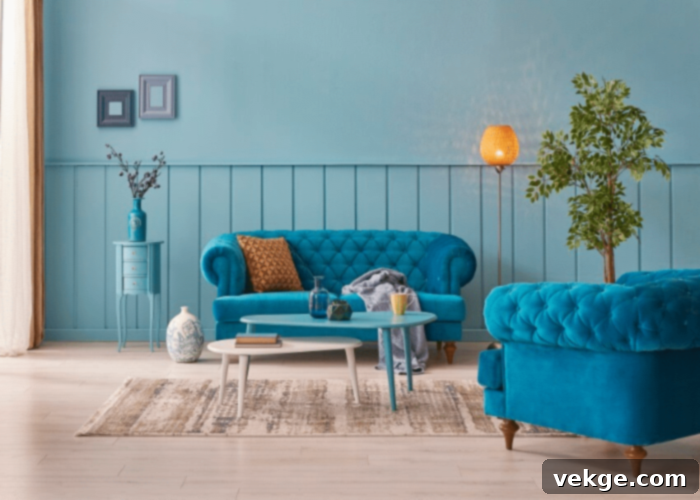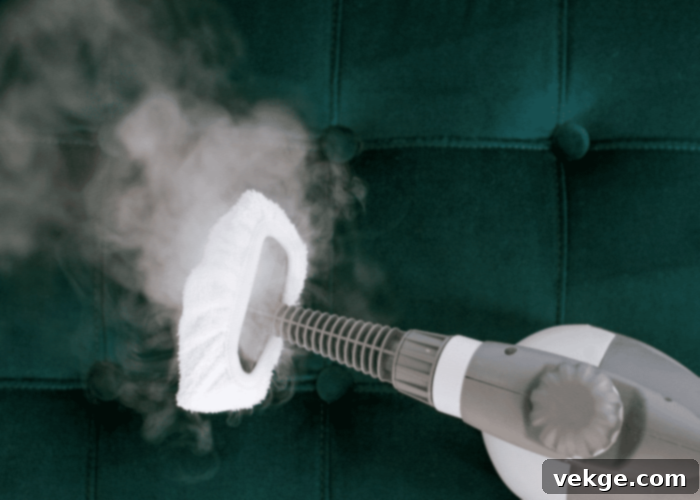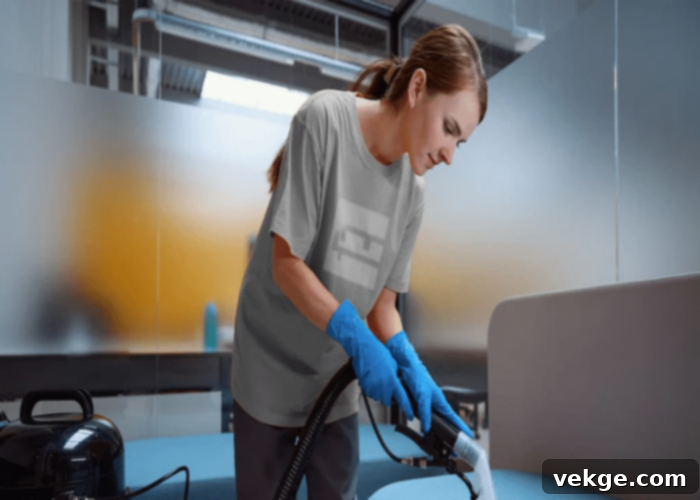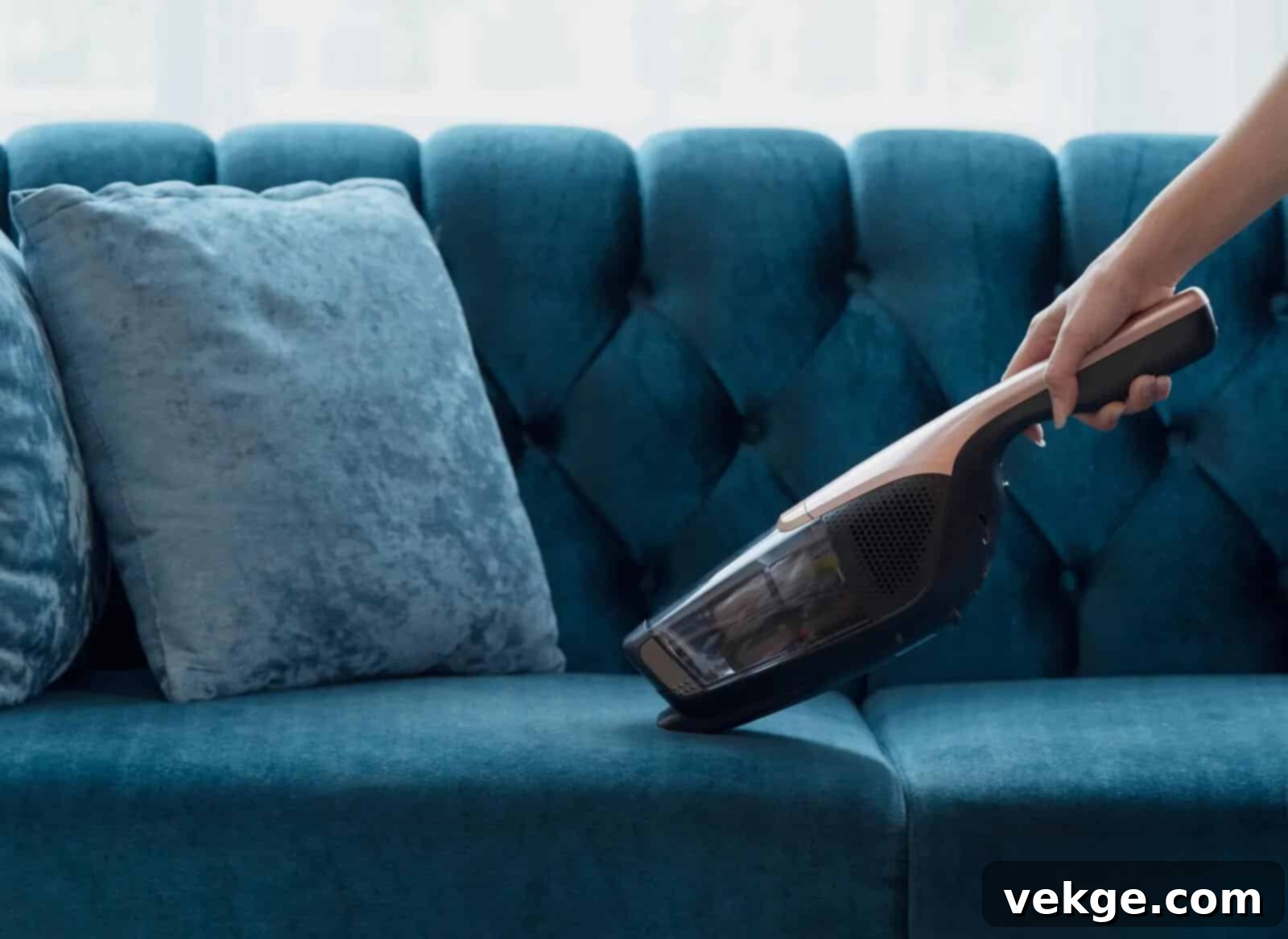The Ultimate Guide to Cleaning and Maintaining Your Velvet Sofa: Keep Your Luxury Furniture Pristine
Velvet sofas have made a magnificent comeback, gracing modern living spaces with their luxurious texture and rich aesthetic. A velvet couch isn’t just a piece of furniture; it’s a statement, instantly elevating any room with its presence. If you’re the proud owner of this iconic, often millennial-favored, status symbol, you’re likely also aware that velvet, like all truly beautiful things, requires a thoughtful approach to care to ensure it retains its opulent charm for years to come.
Whether it’s a vibrant blue velvet sofa in your living room or a sophisticated emerald green piece, your luxurious velvet furniture is susceptible to the realities of daily life – from muddy pet paws and accidental spills like crumbs from peanut butter sandwiches, to the general accumulation of dirt and grime. But don’t let these common concerns deter you. The good news is, you absolutely can clean a velvet couch, and this comprehensive guide will equip you with all the knowledge you need to maintain its pristine condition.
Forget the notion that velvet is a high-maintenance fabric reserved for impeccably tidy homes. With the right techniques and a little regular attention, keeping your velvet sofa looking its absolute best is surprisingly straightforward. In the next few minutes, you’ll uncover the secrets to effective velvet cleaning and long-term maintenance, ensuring your elegant piece remains a focal point of comfort and style.
Understanding Your Velvet: Natural vs. Synthetic Fabrics

Before you even think about cleaning or attempting to remove a stain, it’s crucial to identify the type of velvet your couch is made from. This knowledge dictates the most effective and safest cleaning methods. Velvet comes in both natural and synthetic varieties, each with distinct characteristics and care requirements. Always check the manufacturer’s care tag (often found on the underside of cushions or the sofa frame) for specific cleaning codes (W, S, WS, X).
Natural Velvet: Cotton, Silk, and Linen Blends
Natural velvets, such as those made from cotton, silk, or linen blends, are celebrated for their incredibly soft feel and rich, deep colors. Cotton velvet is durable but can be more absorbent, making it prone to water spots if not cleaned correctly. Silk velvet, the most luxurious, offers an unparalleled sheen but is also the most delicate and expensive, often requiring professional cleaning for anything beyond light dusting. Linen velvet provides a more casual, slightly textured look. While these natural fibers offer that authentic, luxurious aesthetic, they generally require more delicate care and are less forgiving with spills than their synthetic counterparts.
Synthetic Velvet: Polyester, Rayon, and Nylon Blends
Synthetic velvets, commonly made from polyester, rayon, or nylon, have revolutionized the way we experience this opulent fabric. They are engineered to mimic the luxurious feel of natural velvet while offering enhanced durability and stain resistance. For instance, pieces like the “Embrace chair” or “Ceni loveseat” crafted from synthetic velvet are highly recommended for busy households with active pets and young children. These modern velvets boast the same lavish look and soft touch as cotton velvet but are significantly easier to maintain. Ketchup smears from after-school chicken nuggets, for example, won’t leave as noticeable or stubborn a stain on synthetic velvet as they would on natural velvet. This makes synthetic velvet an excellent, practical choice for everyday living without compromising on style.
Essential Everyday Cleaning and Maintenance for Your Velvet Sofa

Despite its reputation for being pretentious, high-maintenance, and exclusive to the spotless elite, velvet is actually quite manageable to care for compared to some other delicate fabrics. Maintaining velvet’s irresistible appeal requires more than just the occasional flip of a cushion; it involves a few simple, regular steps that can significantly extend its life and beauty. Consistent, gentle care is the key to preserving the luxurious look and feel of your velvet upholstery.
1. Regular Dusting and Vacuuming
Whether you’ve just enjoyed a buttery, flaky almond croissant on your Sven Cascadia Blue velvet couch or you’re returning from a winter spent in Spain to find some dusty velvet furniture, dry debris is easily managed. Dust, crumbs, pet hair, and other dry particles inevitably settle on furniture. These problems, which always seem to appear when you’re not looking, can be quickly and effectively eliminated with a simple vacuuming routine. Always use your vacuum cleaner’s gentle brush attachment. This soft brush will lift debris without damaging the delicate velvet pile or leaving any unsightly marks. Move the attachment in the direction of the pile to gently sweep away dust and then lightly against it to fluff the fibers. Aim to vacuum your velvet sofa at least once a week, more frequently if you have pets.
2. Fluffing and Turning Cushions
To ensure even wear and prevent permanent indentations, make it a habit to regularly fluff and turn your sofa cushions. This helps to redistribute the filling and maintain the cushion’s shape, preventing the velvet pile from becoming crushed in frequently used areas. This simple act also allows for better air circulation and prevents dust from settling deeply into the fabric.
Addressing Common Velvet Sofa Issues
3. Steaming for Crushed Pile and Wrinkles

Just like your face might have creases after a whole night’s rest, velvet is not immune to this phenomenon. Plush velvet, characterized by its more enormous pile (taller strands of fabric), can compress under prolonged strain or weight, whether from sitting for long periods or having objects rest on it. This compression can manifest as a wrinkle, a visible crease, or even a lighter, “white spot” where the fibers have been flattened. The good news is, these creases and flattened areas are often simple to revive.
Steaming is an incredibly effective way to refresh crushed velvet fibers and restore their upright, plush appearance. If you don’t have a steam setting on your iron, a handheld steamer is an excellent investment (Good Housekeeping recommends many reliable options for various budgets). When the steamer is ready, begin at an inconspicuous corner and work gently across the fabric, ideally against the direction of the pile. This helps to lift and separate the fibers. Crucially, avoid keeping the steamer stationary for more than a few seconds at a time, even at the lowest heat setting, to prevent over-saturating or damaging the fabric. As you steam, gently brush the fibers with a firm lint brush or a soft-bristled clothes brush. This combination of heat and brushing helps to “zhush” the velvet, making it look vibrant and new again. Always patch test first, especially on delicate natural velvets.
4. Preventing Color Fading

Everything exposed to direct sunlight or even strong indoor light bulbs will eventually experience some degree of color fade. Velvet is particularly sensitive to this phenomenon, and its rich, vibrant hues can diminish over time if not protected. As Zoe Garred, a director of product development, aptly advises, “Velvet is particularly sensitive to color fade. I recommend keeping your furniture out of direct sunshine to keep it pristine.”
To prevent or minimize fading on your velvet couch, consider these strategies:
- Strategic Placement: Position your velvet sofa away from windows or in areas where it receives minimal direct sunlight.
- Window Treatments: Utilize blinds, curtains, or UV-filtering window films to protect your furniture from harsh rays.
- Protective Throws: If relocation isn’t an option, drape throw blankets over the parts of the sofa most exposed to the sun. This provides a physical barrier and can also add another layer of decorative appeal.
- Rotate Cushions: Regularly rotating cushions helps ensure even exposure to light, so any fading that occurs is distributed rather than concentrated in one spot.
Of course, if you’re comfortable with a beautifully worn-in look and appreciate the natural patina that develops over time, then these suggestions may not be a concern for you. Some find the softened, aged appearance of faded velvet to add character and charm. The choice is ultimately yours.
In brief, for general velvet sofa care:
- Use a vacuum cleaner with a gentle brush attachment for dust and other dry debris.
- Regularly fluff and turn your cushions to maintain shape and even wear.
- Steaming the pile can effectively repair crushed fibers and wrinkles.
- To prevent the velvet from fading, keep it away from direct sunlight and consider protective measures.
Spot Cleaning and Stain Removal on Your Velvet Sofa

We’ve all had those moments – that brilliant idea for a baked potato bar at the Christmas party that, while grand in concept, perhaps needed more careful execution. And now, your contemporary velvet sofa is a silent witness to sour cream dollops, greasy bacon bits, or chili smudges. Messy accidents are an inevitable part of life, especially in a busy home, so it’s best to be fully prepared by learning the proper techniques to remove stains from velvet before they set in.
Immediate Action: The First Step to Stain Removal
The very first thing you’ll want to do when something spills on your velvet couch is to remain calm. Take a deep breath. Okay, excellent. Yes, that’s exactly right. Panicking only wastes precious time. Swift action is paramount when dealing with spills on velvet, as it prevents the liquid from soaking deep into the fibers and becoming a permanent stain.
Consult the Manufacturer’s Guidelines
Next, consult the maintenance guidelines provided by the manufacturer. This is critical. The care tag (W, S, WS, X) will offer specific, step-by-step instructions on what cleaning agents and methods to use, and crucially, what to avoid. Ignoring these can lead to irreversible damage.
- W: Water-based cleaning solutions are safe.
- S: Solvent-based cleaners only (no water).
- WS: Both water and solvent-based cleaners can be used.
- X: Vacuum only. No liquid cleaners. This is rare for velvet but important to note.
The Gentle Blotting Technique
In the event of a spill, the initial step, after checking the care tag, is to remove as much of the liquid or solid as possible. Use a soft, clean, lint-free towel or paper towel. It’s important to stress “lint-free” because velvet’s delicate strands can easily entangle with lint, making the clean-up more difficult. Gently blot the spill; never rub. Rubbing pushes the stain deeper into the fabric and can also crush the velvet pile, making the damage worse. Continue blotting until no more liquid transfers to the towel.
Preparing and Applying the Cleaning Solution
After you have soaked up as much of the mess as possible, it’s time to prepare a gentle cleaning solution (if your velvet is coded ‘W’ or ‘WS’). In a cup of cool water, add a few drops of mild dishwashing liquid – the kind that’s gentle enough to remove oil from ducks, for example. Stir or shake it up like a soapy latte to create a generous amount of foamy bubbles. The key here is to use only the suds, not the liquid solution itself. Dip a clean, lint-free cloth into the suds, ensuring your cloth is barely damp, with mostly foam. Then, gently blot the stained area using only these suds. Work from the outside of the stain inwards to prevent it from spreading. Continue blotting with fresh sudsy sections of your towel until as much of the stain as possible has been lifted.
Drying the Cleaned Area
Once the stain has been removed, allow the area to air dry naturally. If you need to speed up the process, you can use a hairdryer on a low-heat setting, keeping it at a safe distance and moving it constantly to prevent heat damage. Avoid saturating the velvet with water, as this can lead to water rings, especially on natural velvets. Once dry, use a soft brush or your hand to gently brush the velvet pile back into its original direction.
When to Call a Professional
While these DIY methods are effective for many common spills, don’t risk ruining your expensive velvet if the stain is stubborn, large, or if you’re dealing with a delicate natural velvet like silk. Talk to a professional upholstery cleaner. They possess the expertise, specialized tools, and cleaning agents to safely and effectively remove difficult stains and refresh your velvet, ensuring it looks new again without causing damage.
While there may not be a foolproof method for cleaning every single velvet stain, the following steps should get the job done for most common issues without causing any harm:
- Before attempting any cleaning, always consult the manufacturer’s recommended procedures and care codes (W, S, WS, X).
- Soak up any liquid immediately using a soft, lint-free cloth or paper towel. Avoid rubbing at all costs.
- Ensure as much liquid is absorbed as possible by gently pressing the cloth in place.
- For W or WS coded velvet, add a small amount of mild dish soap to a cup of cool water and stir or shake to combine.
- Create plenty of foamy bubbles from the solution.
- Dip a clean, lint-free cloth into the suds, using only the foam, not the liquid.
- Blot the stain gently with the sudsy cloth, being careful not to soak the velvet.
- Allow the area to dry naturally, or use a low-heat setting on a hairdryer, keeping it moving.
- Once dry, gently brush the pile to restore its texture.
- If in doubt or if the stain persists, don’t hesitate to ask for professional help.
Advanced Velvet Care Tips for Longevity
Professional Cleaning for Deep Maintenance
Even with diligent spot cleaning and regular vacuuming, your velvet sofa can benefit from professional cleaning every 12-18 months. Professionals have specialized equipment and non-abrasive cleaning agents that can deep clean the fabric without causing damage, removing embedded dirt and allergens, and revitalizing the velvet’s appearance.
Considering Protective Treatments
Some furniture stores or professional cleaners offer fabric protection treatments for velvet. These treatments create an invisible barrier that can help repel spills and make future cleaning easier. If you opt for a protective spray, always perform a patch test on an inconspicuous area first to ensure it doesn’t alter the color or texture of your velvet.
Humidity Control
Extreme humidity, either too high or too low, can affect upholstery fabrics over time. Maintaining a consistent indoor humidity level can help preserve the integrity of your velvet, preventing it from becoming too dry and brittle or too damp and prone to mildew.
Conclusion: Enjoying the Enduring Luxury of Your Velvet Sofa
Modern velvet couches have been ingeniously crafted to endure the challenges of everyday life, from accidental spills and slobbering pets to the inevitable touch of sticky fingers. Far from being a delicate museum piece, today’s velvet upholstery is often robust and designed for living.
Knowing how to clean a velvet couch and implementing a consistent maintenance routine empowers you to fully enjoy its luxurious comfort. This understanding ensures that your moments of relaxation and your home’s aesthetic appeal remain uninterrupted by upkeep concerns. With the right care, the contemporary blend of elegance and functionality in your velvet sofa allows you to revel in its softness, rich texture, and opulent visual appeal without worry. It makes your velvet furniture not just a delightful addition to any modern household, but a lasting investment in comfort and style, ready to withstand the rigors of daily life while retaining its pristine, inviting allure.
